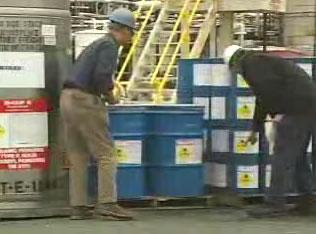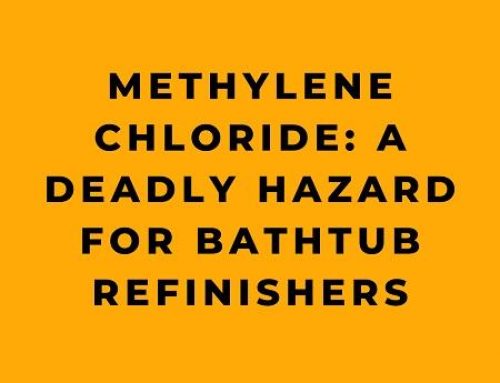As a business owner, it is your responsibility to ensure the safety and health of your employees. One important aspect of this is understanding and complying with the Hazardous Waste Operations and Emergency Response (HAZWOPER) regulations set by the Occupational Safety and Health Administration (OSHA).
Proper labeling of hazardous materials, or HAZMAT, is essential to protecting workers and the environment from the hazards associated with these materials. Here are ten tips for businesses to help ensure proper HAZMAT labeling in the workplace:
- Understand the specific HAZMAT labeling requirements that apply to your business, as they may vary depending on the type and level of hazardous materials you work with.
- Identify all hazardous materials that are present or used in your workplace.
- Properly label all hazardous materials containers with the appropriate hazard warning labels.
- Use clear and concise language on hazard warning labels, including the specific hazards associated with the material and the necessary protective measures that should be taken.
- Use the appropriate color-coding system for hazard warning labels, as specified by OSHA and other regulatory agencies.
- Label containers with the name and hazard class of the hazardous material they contain.
- Provide material safety data sheets (MSDS) for all hazardous materials, including information on the specific hazards, handling and storage instructions, and emergency response procedures.
- Keep hazardous materials containers closed and properly sealed when not in use.
- Regularly inspect and update hazard warning labels to ensure they are accurate and in good condition.
- Train workers on the importance of proper HAZMAT labeling and the hazards of hazardous materials.
By following these tips, you can help ensure compliance with HAZWOPER’s HAZMAT labeling requirements and protect the health and safety of your employees. Proper labeling of hazardous materials is critical to informing workers of the potential hazards they may encounter and the necessary precautions they should take.
It is also important for businesses to understand and comply with the various regulations and guidelines related to HAZMAT labelings, such as the Hazard Communication Standard (HCS) and the United Nations Globally Harmonized System of Classification and Labelling of Chemicals (GHS). These regulations establish specific requirements for the labeling of hazardous materials, including the use of standardized hazard symbols and warning labels.
Proper HAZMAT labeling is not only important for the safety of your workers, but it is also critical for the safe handling and transportation of hazardous materials. Accurate and up-to-date labeling helps ensure that hazardous materials are stored, transported, and disposed of safely and helps prevent accidental releases or spills.
In addition to the above tips, there are several other important considerations regarding proper HAZMAT labeling in the workplace.
One important aspect to consider is hazard symbols and warning labels. Hazard symbols are standardized graphical symbols that are used to identify the specific hazards associated with a hazardous material. These symbols are often accompanied by a warning label that provides more detailed information on the hazards and the necessary protective measures that should be taken.
It is important to use the appropriate hazard symbols and warning labels for each hazardous material, as specified by the relevant regulations and guidelines. Using the wrong symbol or label can lead to confusion and misunderstandings, which can have serious consequences in the event of an emergency.
Another important aspect to consider is material safety data sheets (MSDS). MSDS are documents that provide detailed information on the hazards, handling and storage instructions, and emergency response procedures for hazardous material. It is important to have an MSDS for each hazardous material used or stored in the workplace and to make these documents readily available to workers and emergency responders.
Proper storage of hazardous materials is also critical to ensuring safety in the workplace. This includes storing materials in appropriate containers and designated areas away from ignition sources. It is also important to follow all applicable regulations and guidelines for storing hazardous materials, such as those set forth by OSHA and the National Fire Protection Association (NFPA).
Proper handling of hazardous materials is also essential to ensuring safety in the workplace. This includes following the specific handling and storage instructions provided on the hazard warning labels and MSDS, as well as providing appropriate personal protective equipment (PPE) to workers who may be exposed to hazardous materials.
Transportation of hazardous materials also requires careful planning and attention to detail. This includes using approved containers and following all applicable regulations and guidelines for transporting hazardous materials. It is also important to have trained personnel who are familiar with the hazards of the materials being transported and the proper procedures for handling them.
Proper disposal of hazardous materials is also essential to protecting the health and safety of workers and the environment. This includes following all applicable regulations and guidelines related to the disposal of hazardous materials, as well as proper packaging and labeling materials to ensure they are transported and disposed of safely.
It is important to establish and maintain effective communication with workers and other relevant parties, such as emergency responders, to ensure the safe handling of hazardous materials in the workplace. This can include providing training and information on the hazards of hazardous materials, as well as establishing clear procedures for responding to emergencies.
To further emphasize the importance of proper HAZMAT labeling in the workplace, it is worth considering the potential consequences of not properly labeling hazardous materials.
Inaccurate or outdated hazard warning labels can lead to misunderstandings and incorrect handling of hazardous materials, which can result in serious injuries or fatalities. For example, if a worker is not aware of the flammability of a particular chemical, they may handle it in a way that increases the risk of a fire or explosion.
In addition to the risks to workers, improper labeling hazardous materials can also have serious environmental consequences. For example, suppose a hazardous material is not properly labeled and transported. In that case, it could lead to an accidental release or spill that could have significant negative impacts on the environment and public health.
Furthermore, non-compliance with HAZMAT labeling requirements can result in significant fines and penalties for businesses. OSHA and other regulatory agencies take compliance with these requirements very seriously and can impose significant fines for violations.
To avoid the potential risks and consequences of improper HAZMAT labeling, it is essential for businesses to understand and comply with the relevant regulations and guidelines, as well as to implement effective hazard communication programs in the workplace. This can include providing training to workers on the hazards of hazardous materials and the proper handling and storage procedures, as well as regularly reviewing and updating hazard warning labels and MSDS.
In summary, proper HAZMAT labeling is essential to the safety and health of workers and the environment. By following the above tips and complying with the relevant regulations and guidelines, businesses can help ensure the safe handling, transportation, and disposal of hazardous materials and protect the health and safety of their workers and the environment.
Do you need HAZWOPER Online Training?
Try a free demonstration of HAZWOPER: HAZMAT Labeling










